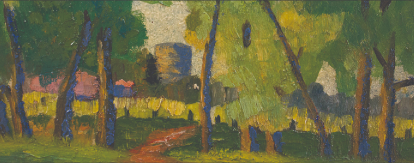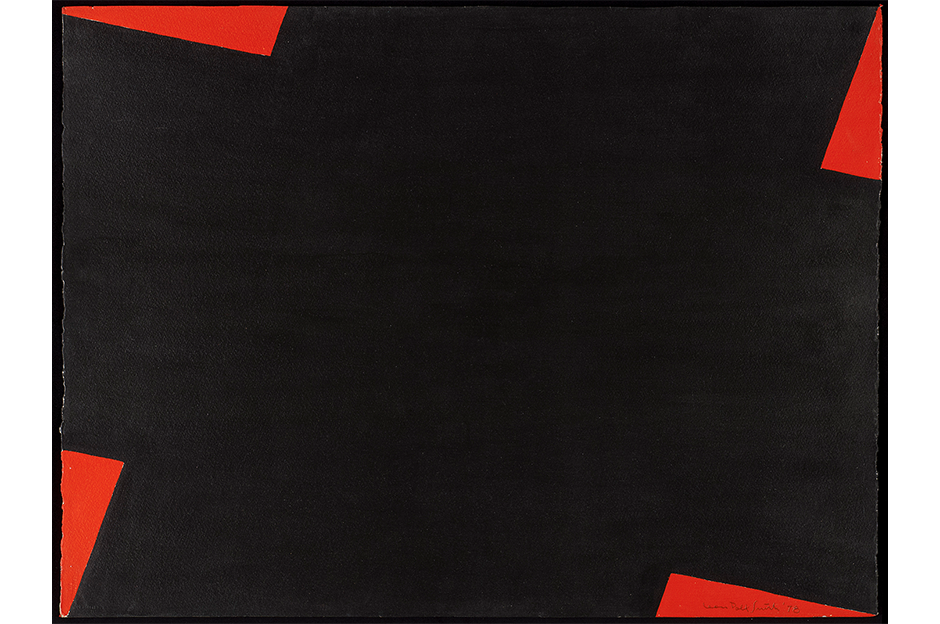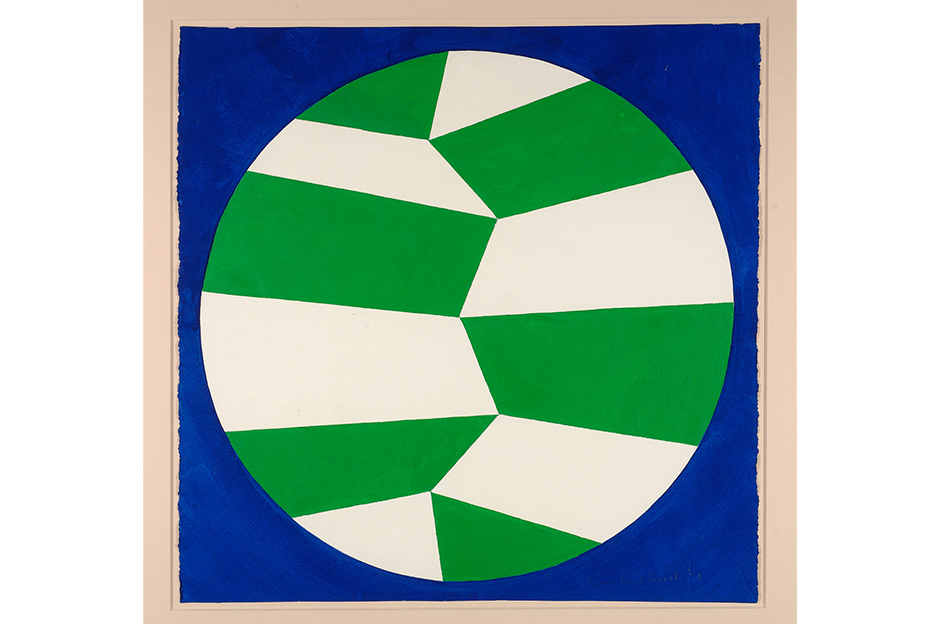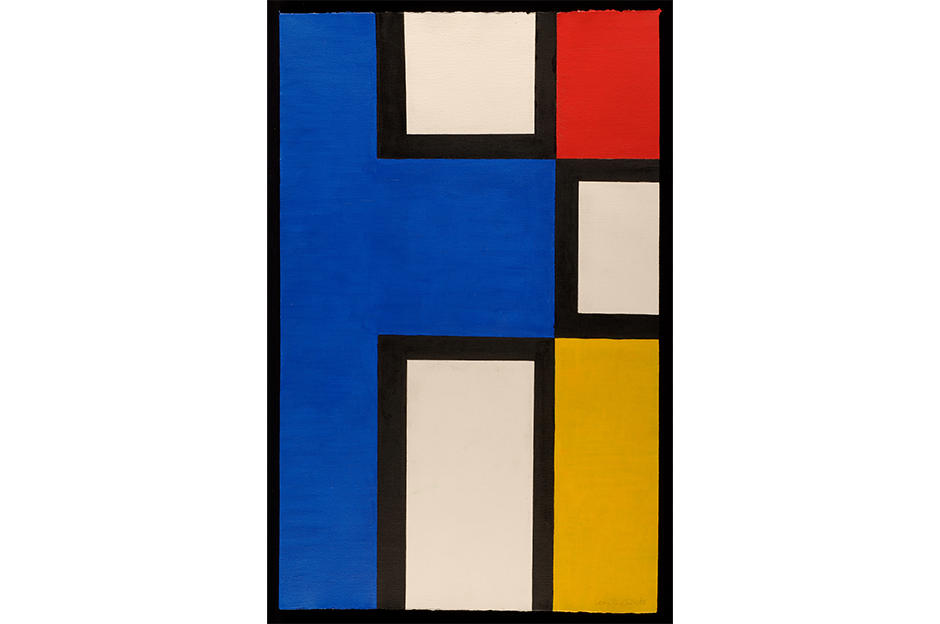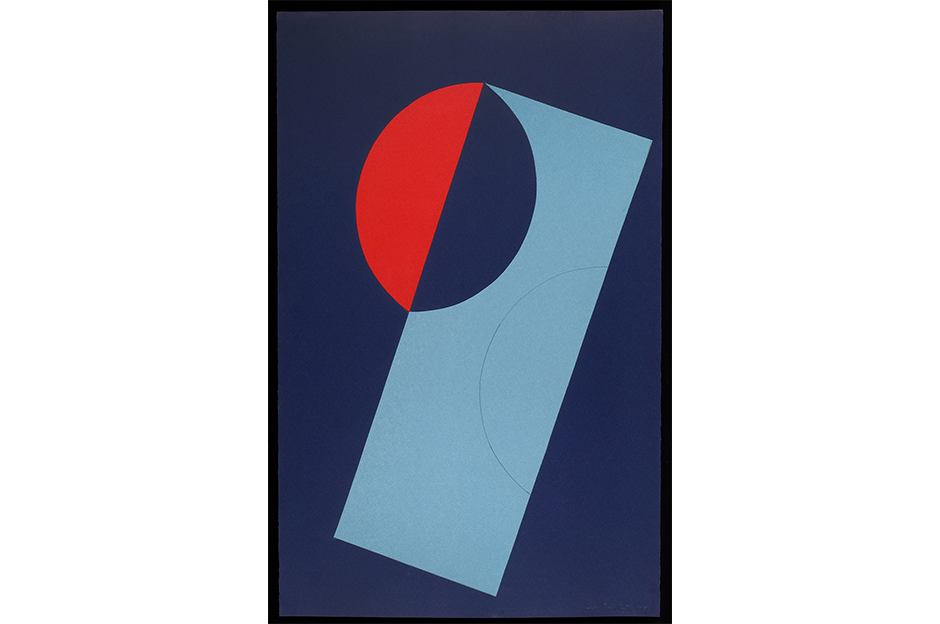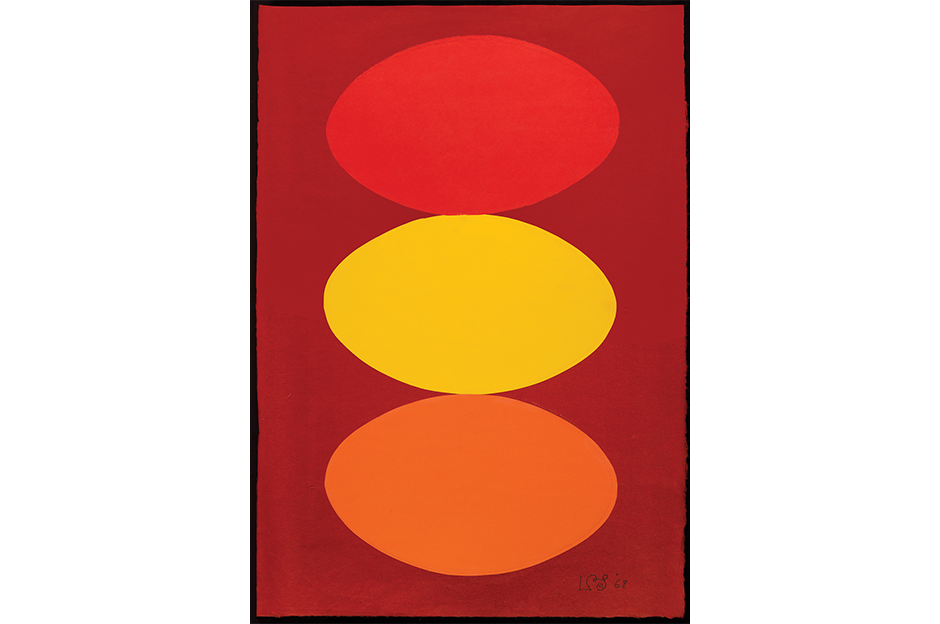In the first-ever museum retrospective of drawings and collages by a pioneer of geometric abstraction, the Museum of Art proudly presents Geometry in Motion: Leon Polk Smith Works on Paper, on view October 7 through December 31. This exhibition examines Smith’s (1906-96) characteristic pieces from the 1940s, as he entered his artistic maturity, through the 1990s, when he was ever-prolific and undiminished by time.
Smith’s work is always in motion. In a 1963 interview, he discussed the energizing effects of the placement of color against color or the vibration that can be stimulated by the subtle movement of a line. His drawings and collages reflect this spirit; they are impressive in scale, with lively, expansive compositions that are full of joie de vivre.
As a graduate student in New York City, Smith had an artistic epiphany in 1936, when he saw works of art from the A.E. Gallatin Collection of European modernists at the Gallery of Living Art, New York University. Smith was particularly impressed by Piet Mondrian’s achievement of creating compositions of space-as-form / form-as-space. By the mid-1950s, Smith had arrived at his non-objective style; his bold forms and palette combined in compositions that seem consistently (but deceptively) simple and effortlessly made. Smith did not consider himself a minimalist, though, and his paintings, drawings, and collages may be read as allusive. His desire to express “endless space,” for example, was derived from childhood and youthful experiences living in Oklahoma and the American Southwest, what he described as “the big forms big spaces [sic].” He was similarly inspired by the space of New York City—its canyons and interstices—when he first visited in the 1930s and which became his residence in 1945. Smith’s palette, too, was inspired by what he encountered in nature as a child, “My colors . . . came as only color, the sky, the sun, the earth of the dazzled S.W. [sic].”
Using different kinds of papers, some painted with saturated pigments, Smith achieved a bold expression in a variety of series. He began his torn paper drawings in 1958, forgoing traditional drawing methods in favor of tearing paper and pasting the beveled edge to the top of the colored paper from which it was torn. The Correspondences are big, organic forms and interpenetrating colors that burst with sexuality. The Form Space pieces create a pas de deux between shapes that simultaneously pull on and retreat from the other. The Constellations are compositions of linked forms that expand the visual field from the self-contained to the surrounding wall. Late in his career, Smith began to isolate line as an entity for investigation. Geometry in Motion will be accompanied by a fully illustrated catalog.

